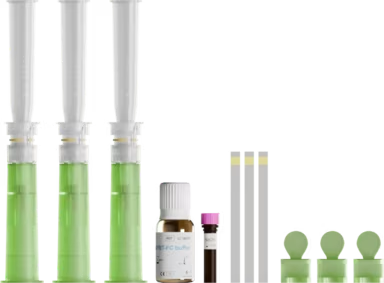ScreenCell® is reshaping liquid biopsy and modern oncology as a pioneer in capturing circulating tumor cells (CTCs) with its performant and cost-effective filtration devices.
Explore over 70 scientific articles authored by our customers and partners that showcase the effectiveness of our technology
Over 70,000 filtration units used in fundamental and clinical research projects worldwide.
Trace back over 10 years of experience, know-how and innovation.
+90%
circulating tumor cells recovery rate.
Through its innovative filtration devices, CYTO and MB, ScreenCell® has transformed the isolation and enrichment of circulating tumor cells (CTCs) in liquid biopsy, delivering an unparalleled blend of simplicity, precision, and efficiency.

2D cell culture
3D cell culture
MGG staining
Immunofluorescence
Immunocytochemistry
Fluorescence in situ hybridization
DNA extraction
RNA extraction
Discover the diverse range of applications offered by ScreenCell® technology, focusing on three key areas : cytology, molecular biology and cell culture.
Explore the full range of ScreenCell® kits, each specifically designed to meet the diverse needs of liquid biopsy applications.

Blood sample
< 3 days
or
Cells fixed detached
from the isolation support for analysis in suspension or on slide

Blood sample
< 4 hours
or
Cells fixed detached
from the isolation support for analysis in suspension or on slide

Blood sample
< 4 hours
Living cells detached
from the isolation support for suspension analysis

Blood sample
< 4 hours
Living cells detached
from the isolation support for suspension analysis

Blood sample
< 4 hours
Cells fixed and analyzed on the isolation support
Cytological
staining
Immunofluorescence
Fluorescence in situ hybridization

Blood sample
< 3 days
Cells fixed and analyzed on the isolation support
Cytological
staining
Immunofluorescence
Fluorescence in situ hybridization

Blood sample
< 3 days
or
Cells fixed detached
from the isolation support for analysis in suspension or on slide
Cytological
staining
Immunofluorescence
Immunocytochemistry
Fluorescence in situ hybridization

Blood sample
< 4 hours
or
Cells fixed detached
from the isolation support for analysis in suspension or on slide
Cytological
staining
Immunofluorescence
Immunocytochemistry
Fluorescence in situ hybridization

Blood sample
< 4 hours
Living cells detached
from the isolation support for suspension analysis
Cytological
staining
Immunofluorescence
Immunocytochemistry
Fluorescence in situ hybridization
2D cell culture
3D cell culture

Blood sample
< 4 hours
Lysed living cells on the isolation support
DNA extraction
RNA extraction
Compatible dPCR
Compatible NGS
2D cell culture
3D cell culture

Blood sample
< 3 days
Lysed living cells on the isolation support
DNA extraction
RNA extraction
Compatible dPCR
Compatible NGS